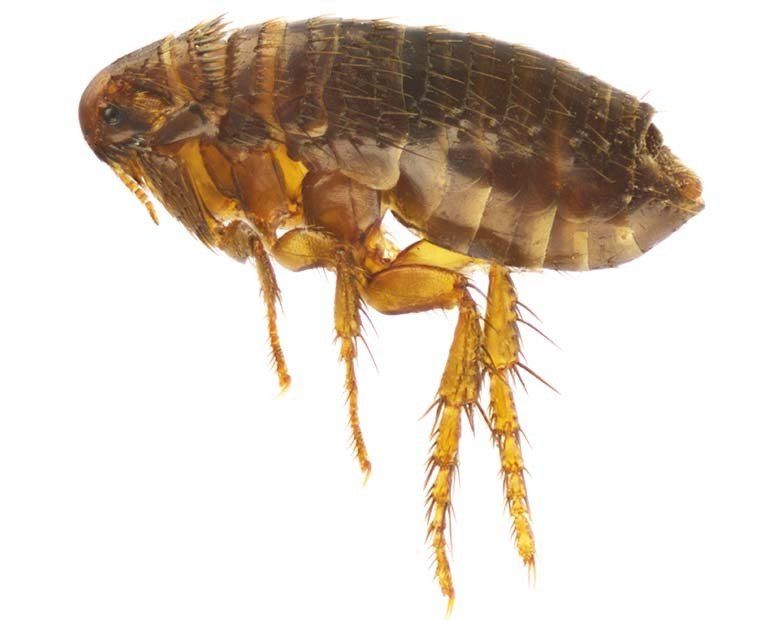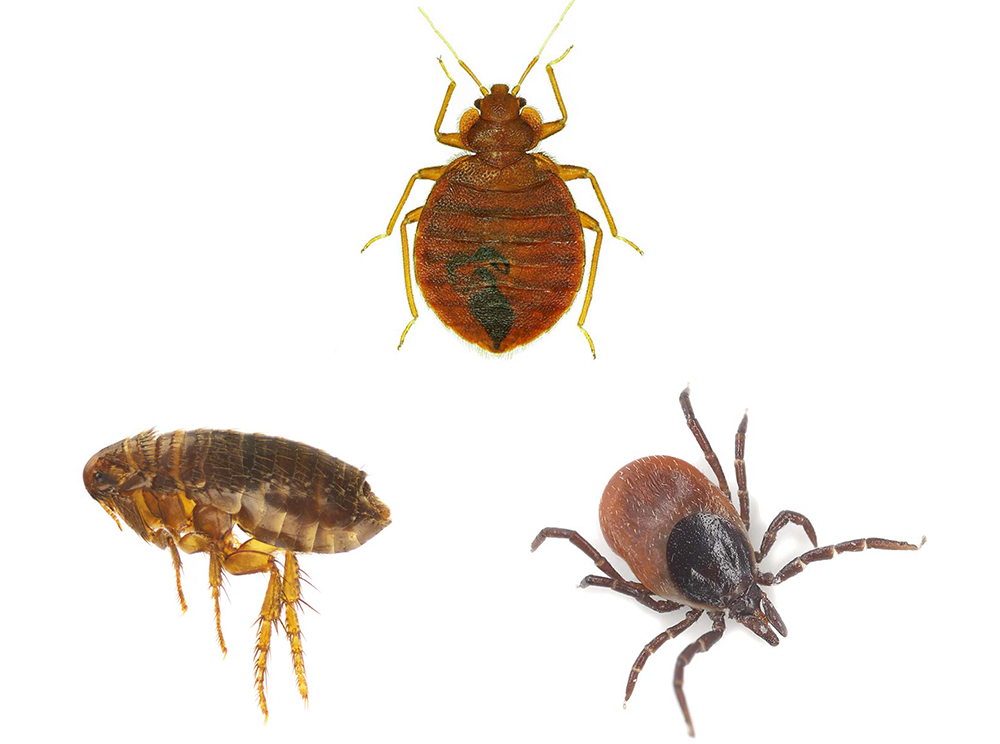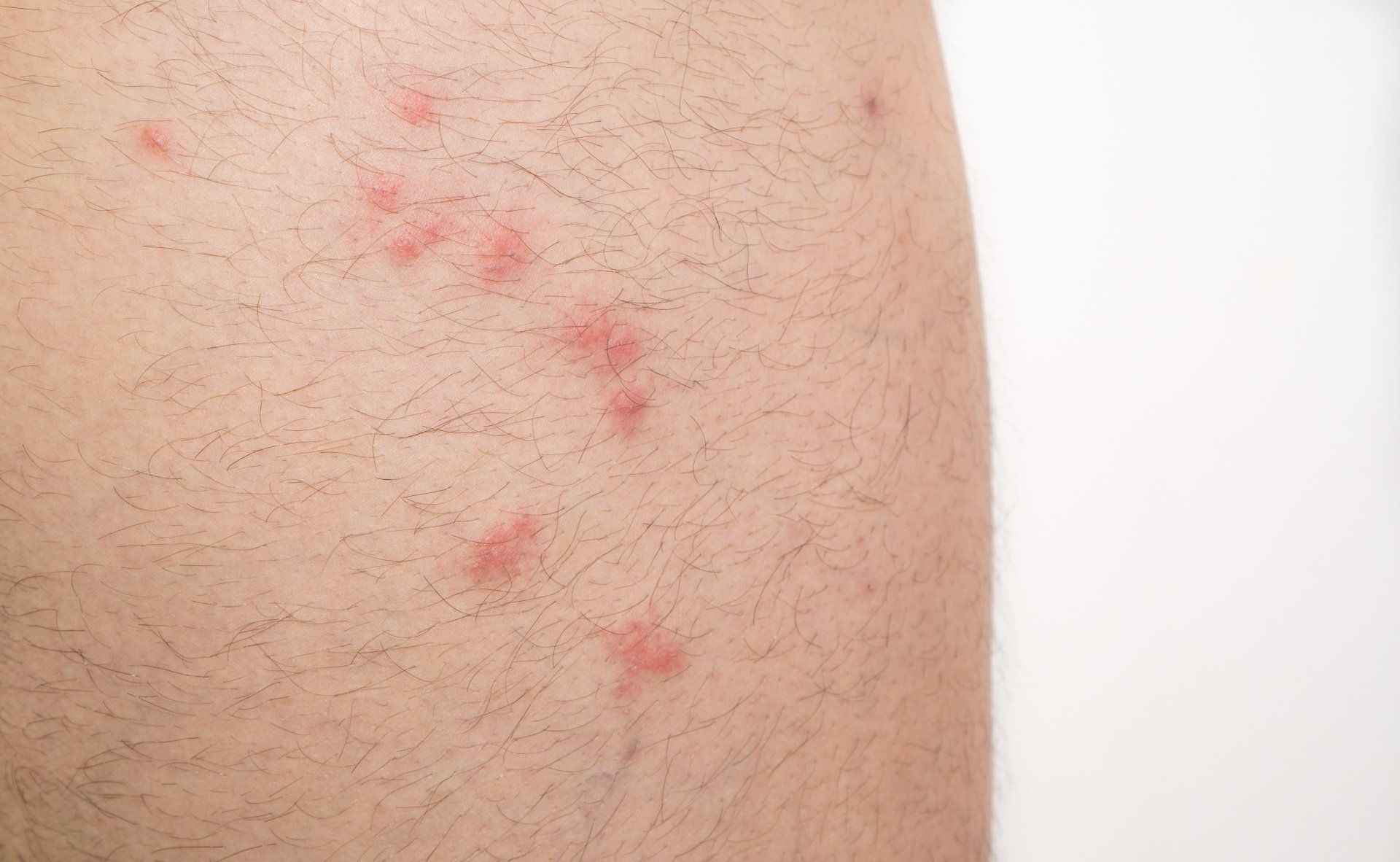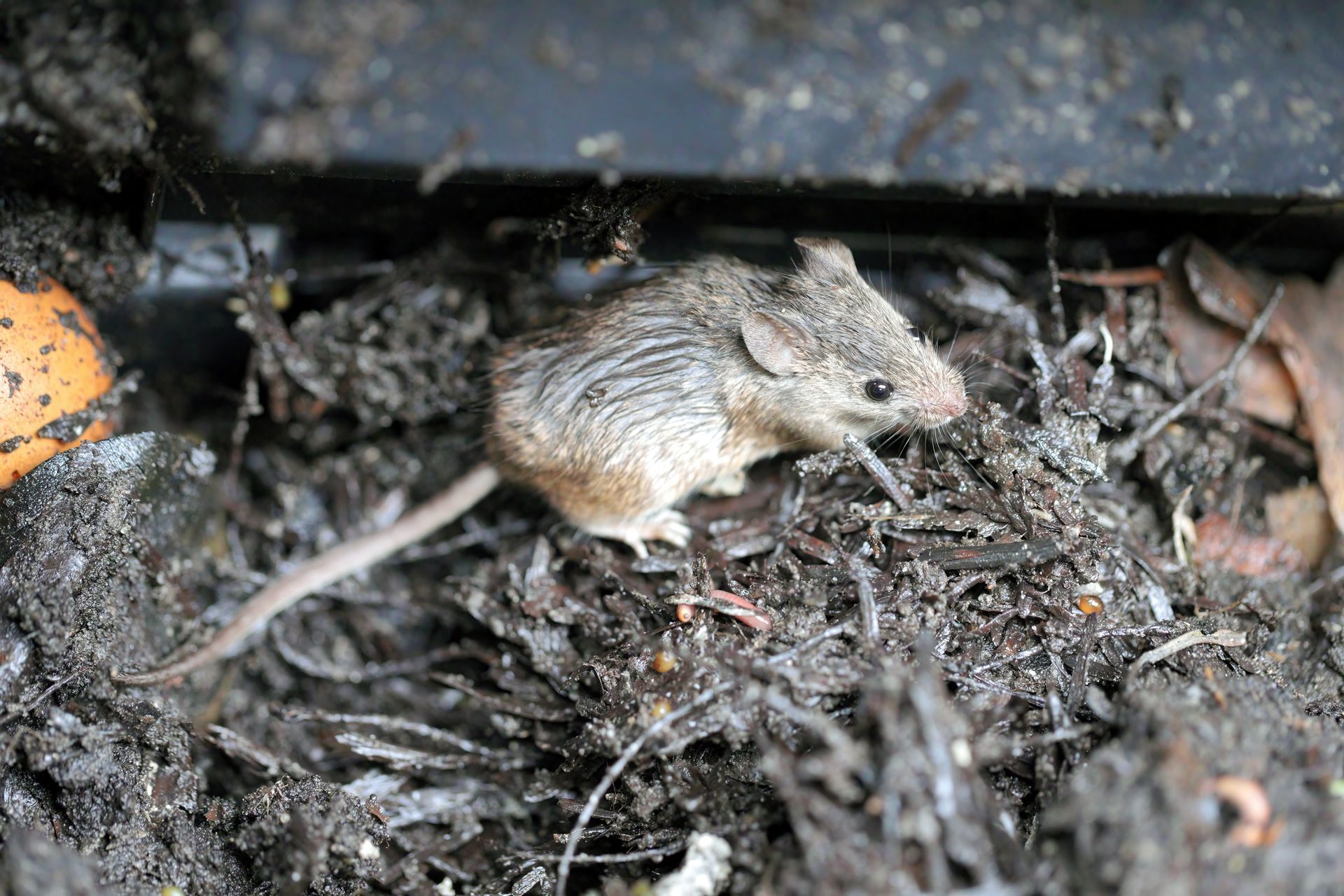What Are Fleas

Fleas are one of the most common bloodsucking parasites that infest homes all over the world. They are very small but can cause itchy red bites that irritate the skin of most household pets and humans. They were largely responsible for the spread of the “black death” that killed an estimated 25 million people in early 14th century Europe and are still vectors for dangerous diseases that can infect humans and animals alike. While they are flightless insects, they are capable of jumping extremely long distances which allows them to catch rides into your home on pets and rodents. Implementing strategies that include pet treatment and rodent exclusion should help prevent fleas from infesting your home. Understanding more about fleas is critical to understanding how to keep flea populations under control.
Flea Classification
Modern fleas are part of the order Siphonaptera and can be segmented further into several superfamilies. The different superfamilies include Pulicoidea, Malacopsylloidea, Ceratophylloidea, Vermispsylloidea, and Hystrichopsylloidea. Each superfamily contains several species of fleas that are categorized by their preferred host.
Types of Fleas
Globally there are close to 2,500 known species of fleas with over 300 species found in the United States. Much like their classification, the different species are identified by their preferred host. The most common household fleas in the United States include:
- Xenopsylla cheopis (oriental rat fleas)
- Oropsylla montana (ground squirrel fleas)
- Ctenocephalides felis (cat fleas)
- Ctenocephalides canis (dog fleas)
- Ctenocephalides gallinae (bird fleas)
- Pulex irritans (human fleas)
Flea Appearance

No matter what species they belong to, most common fleas share very similar features. They are small, wingless insects with 6 legs that are covered in tiny spines and bristles that allow them to stay securely attached to their host. Each flea is .1 - .3 cm which makes them about the size of a grain of salt. They are dark brownish red but are so small that they appear black. Their bodies are oval and if you are looking down at the insect from above, they appear very thin and narrow.
Fleas are not the only small bloodsucking parasite that are commonly found in the US. Ticks and bed bugs are also a problem, so it is important to know the differences between fleas, ticks, and bed bugs. Fleas are the smallest of the group and are extremely hard to see without close inspection. Ticks and bed bugs are slightly bigger and are much easier to see. Bed bugs are roughly the size of an apple seed while an unfed tick is about the size of a sesame seed. Both of these bugs are flat and wide while fleas are thin. Ticks are primarily found outside, and bed bugs are typically found inside in or around mattresses where humans sleep. Fleas on the other hand, are found anywhere a host can be found.

Flea Form & Function
Fleas’ bodies have evolved over thousands of years to be adept at finding and infesting their hosts. Similar to other blood sucking pests, fleas are attracted to the CO2 that their hosts release when they breathe. This allows them to find a suitable source of food. Once they are in close enough proximity to their prey, fleas can jump up to 150 - 200 times their body length to latch onto their host using their strong set of back legs. Once attached, their bodies are covered in tiny backward facing spines and bristles that allow them to move quickly through the hair on their host’s body while also securing them from being shaken loose. Their mouths have developed in a fashion that allows them to penetrate the skin of their host and draw blood.
Flea Bites

Fleas will bite their hosts in order to draw blood which result in itchy red bites. If their preferred host is an animal, fleas tend to gather on the back and neck of the animal where it is most likely sheltered from being scratched off. If the preferred host is human, fleas will attack the legs because fleas will jump onto a person as they walk past. Regardless of what host is being attacked, fleas can cause severe skin irritation that can result in infection if scratched too heavily and even allergic reactions in humans. In the worst-case scenario, fleas are capable of transmitting seriously dangerous pathogens from their saliva and gut.
Are Fleas Dangerous?
Aside from the typical skin irritation and potential allergic reactions that flea bites may cause to humans and pets, the bites can also deliver a flea borne pathogen and parasites directly into the blood stream of their host. The most dangerous of these pathogens and parasites include the bubonic plague, murine typhus, and tapeworms. In addition to the potential diseases that can be spread, fleas can also cause a condition called anemia in their hosts which is when there are not enough healthy red blood cells to carry oxygen to your body.
Signs of a Flea Infestation
Knowing the common signs of flea activity are important in catching an infestation before it gets out of hand. Be sure to look out for the following:
- Pets that are scratching, biting, or licking themselves more frequently than normal
- Visible fleas on your pets or yourself
- “Flea dirt” (flea poop) in the fur coat of your pet or around the pet’s bedding
- Flea bites on the ankles or legs of anyone that lives inside a home
- Fleas caught in flea traps
If any of the above signs have been found, it is likely safe to assume that you have an existing flea infestation that needs to be addressed and treated.
Flea Life Cycle
Fleas develop through 4 stages of their life cycle. These stages include the egg, larvae, pupae, and adult. The eggs are so small they are almost invisible to the naked eye in addition to being translucent white. Female fleas can lay eggs in clusters of 20 – 40 eggs per day and they are not secured to the host, so they often fall to the ground. Upon hatching, larvae will emerge that are small, legless, worm like bugs that feed on flea dirt left by adult fleas until they are ready to pupate. During the pupal stage, flea larvae will spin themselves into a cocoon where they will remain dormant until they have developed into mature fleas that are ready to feed and lay eggs. This entire process can take as little as 21 days in optimal conditions but can also take several months if conditions are poor. After reaching adulthood, fleas will be ready to feed and lay eggs. They can survive for up to 2 weeks without food and up to several months with a stable supply of blood meals.
When Are Fleas Active?
Fleas are most active when environmental conditions are optimal because the move through the first 3 stages of their life cycle much quicker. The faster fleas can reach adulthood, the faster an infestation will get out of hand. When environmental conditions are warm and humid, fleas will thrive while colder temperatures will cause fleas eggs and pupae to remain dormant. Fleas are also active when there is light because they rely on their eyes to detect movement. When night falls, fleas are unable to see clearly which force them to remain hidden and inactive.
Where Do Fleas Come From?
Before an infestation grows inside a home, fleas initially have to be introduced into a new environment. This typically happens when a pet or human picks up a flea while walking outside through tall grasses or heavily wooded areas. Once a flea has caught a ride, it will start feeding and then laying eggs. As you return home with your new uninvited guest, the flea eggs that are laid will be shed around a home where they can develop into adults. Once a small population of fleas has developed inside, it is a short time before they explode into a full-blown infestation.
Where Do Fleas Live?
95% of the fleas in your home are made up of eggs, larvae, and pupae. Fleas in the earlier stages of their lives, are often found deep in the carpet of your home. That last 5% of fleas are adults who will seek out a warm-blooded host immediately after the pupal stage. Once they find a host, they will latch on and stay buried safely in the fur until they are treated or knocked loose by aggressive scratching.
How to Prevent Fleas
Preventing fleas requires a multi-faceted approach that incorporates cleaning a home, medicating a pet, and implementing rodent exclusion. Each pillar of flea prevention is useless without the others. Medicating pets with specialized flea treatments and implementing rodent exclusion will help prevent fleas from finding a host to feed on. These are equally important because fleas will target any warm-blooded host when others are not available. It also helps to check and bathe pets regularly to ensure they are flea free. This should be followed with cleaning up the inside and outside of your home. By vacuuming the inside regularly and thoroughly, homeowners can reduce the number of eggs, larvae, and pupae found in carpets. By keeping grass cut short outside your home, you can reduce the potential for fleas around your home that may catch a ride in.
How to Get Rid of Fleas
If fleas have managed to infest your home, immediate treatment becomes critical to prevent a much worse problem. Since fleas can reproduce at a rapid rate, a small problem with a few fleas can reach populations in the hundreds and even thousand if not taken care of quickly. Due to the flea life cycle, flea treatments could also take several weeks or months to completely eradicate. This is because treating for adult fleas doesn’t always get rid of the earlier stages of the life cycle. This then allows younger flea populations to mature which result in a rebounding infestation in up to 21 days. To effectively treat for fleas, be sure to use specialized flea medication on your infested pet. In addition, the house will need to be thoroughly and regularly vacuumed until signs of infestation are gone. It also helps to regularly wash linens, clothing, and bedding using high temperatures that will kill fleas. For serious infestation, professional help may need to be enlisted. Learn more about how to get rid of fleas here.
Contact EcoGuard Pest Management for Immediate Flea Control
If all other flea treatment attempts have failed, it is time to bring in professionals. The team at EcoGuard Pest Management has licensed and experience flea control experts ready to step in. Our process starts with a thorough inspection of a property to identify problematic areas that may need specialized care. Our flea control experts will customize a plan designed to effectively treat for fleas with a return service to ensure they are completely gone.

















